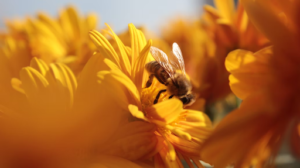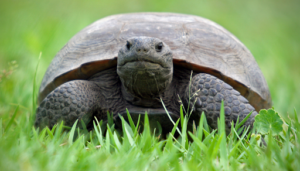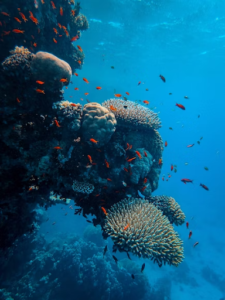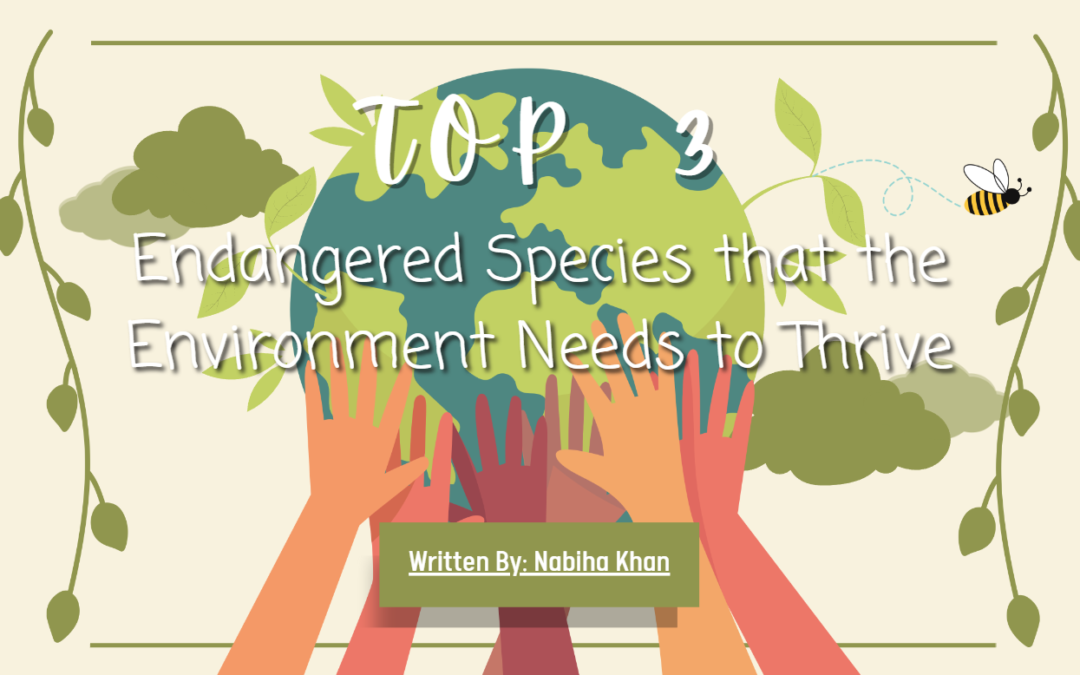Top 3 Endangered Species That The Environment Needs To Thrive
Written By: Nabiha Khan
Edited By: Morgan Pankarican
Designed By: Sophia Y
Published By: Samantha Porte
Many are aware of the species that have become endangered, but not everyone takes to mind how dangerous this can be for our environment. In this article, I will briefly go over the top 3 endangered species that the environment needs to thrive, and how we can save them.
(Species are not listed in any specific order)
- Bees

Photo taken by İbrahim Özdemir, Provided on Unsplash.
Whether or not you’re familiar with which animals have become endangered or not, you have probably heard of what’s been happening to bees. Currently, bees are facing endangerment due to climate change and harmful pesticide use.
What does that mean though? Climate change has brought forth a significant impact on bees, causing habitat loss because more bees are failing to relocate to cooler areas for new hives. The increasing temperatures have made it significantly harder for bees to find new places, preventing them from settling down. Shifting temperatures also tend to make some flowers bloom earlier, which mismatches the bee’s schedule. This worsens their health, makes them less likely to reproduce, and makes them more vulnerable to predators.
Pesticides are also very dangerous for bees. People use them intending to get rid of bees, but they need to understand that bees are important for the environment, and shouldn’t be harmed in such ways if we want to live on a sustainable Earth. Pesticides disrupt bees’ learning and memory, which causes their life expectancy to decrease, whilst also making their reproductive rate lower as well.
Before we move on, many of you are probably wondering why I think bees are so important for our ecosystem. Bees are natural pollinators that are responsible for pollinating around 80% of flowers, and over 130 varieties of fruits and vegetables. Without bees, we would lose our food source, which would lead to more world hunger and a lack of resources – something that we’re already struggling with.
So, how can you help bees? You can start by planting flowers since bees rely on pollination to survive. This will benefit both the environment and the bees (whilst also benefiting you!). Another thing you can do is stop using pesticides. I’ve already explained how harmful pesticides are to bees, and if we simply switch to other methods such as using physical barriers to keep pests out, we might have a chance at saving the bees. Lastly, you can make a bee bath. Most bees have a hard time getting water due to drowning, even ponds can drown them, but bee baths can help bees safely get the water they need without harm! If we continue to do these things, it’s entirely possible to make bees secure and safe once again!
- Gopher Tortoise

Photo provided by Wikimedia Commons.
Before writing this article, I hadn’t actually heard of these before, and I won’t be surprised if you haven’t either. These tortoises are facing endangerment due to habitat loss.
Like many species, they are also facing habitat loss due to deforestation, fragmentation and degradation, mainly caused by urbanized development. The developments are usually made in high, dry places that these tortoises also happen to call home. Along with their homes getting destroyed, they also potentially can get hit by cars on the road when looking for nest sites. Although urbanization is hard to prevent as a normal citizen, it is important to think about how threatening this can be to these innocent creatures before taking such actions to increase urbanization.
So, how are gopher tortoises important for the environment? They’re important because they burrow holes and provide shelter to hundreds of other animals out there, including frogs, owls, and even endangered indigo snakes. The gopher tortoise is an animal that not only helps itself, but helps other animals (including some endangered ones) that are very important for the world’s natural ecosystems. Without them, many animals would also face habitat loss, making hundreds of more animals endangered.
Lastly, how can we help them? There’s not much we can do to help them, but if you ever see one in your backyard, make sure to provide a safe space for it, and not chase it away. Especially, make sure to distance your pets and children from the tortoises, as they can be harmful, even in attempts to just play with the tortoise. If you ever see one crossing the road, you can also help by making sure it crosses properly, alerting drivers that an animal is currently crossing. Although this may not seem enough for you, small steps like these could potentially save gopher tortoises.
- Coral

Photo taken by Francesco Ungaro, Provided on Unsplash.
Lastly, we have corals. This is another popular one you have probably heard of before, which just signifies how important corals are for our environment. Corals are currently endangered due to climate change, pollution, and fishing.
Like always, climate change is a factor in the endangerment of coral. Due to increased acidification and warmer temperatures in the ocean, the coals are subjected to increased stress, which contributes to coral bleaching. The risks of infectious diseases also get much higher due to decreased calcification. Water pollution on the other hand also harms corals since corals need safe and clean water in order to thrive. Pollution is one of the main factors that harm corals, and many people continue to pollute the ocean knowing this. Lastly, overfishing can lead to lower numbers of fish that clear the coral of overgrown algae, and without those fish, coral can’t survive.
So, how is coral helpful to the environment? Corals prevent storms and erosion, helping secure our coastline. Along with that, coral is a source of food for many fish, and without coral, a lot of them could become endangered. Lastly, coral has recently been used for new medicine and can help prevent illnesses. Unfortunately, there are environmental concerns which arise from using coral for medicine due to the fact that they’re endangered. This isn’t good, since corals can help treat cancer, arthritis, human bacterial infections, Alzheimer’s disease, heart disease, viruses and other diseases.
Finally, how can we help prevent coral endangerment? We can help by recycling and throwing trash away responsibly. Water pollution contributes to the fact that they are endangered, and if we keep the ocean clean, we can save the corals. We can also do other things to prevent pollution such as using more environmentally friendly ways of travel or buying more environmentally friendly products. Lastly, we can also try to save as much energy as possible, so turning off lights when not in use or unplugging unused chargers is always helpful!
Before I end this article, there is also one way I have not mentioned which helps prevent the endangerment of these species and many more: we can help spread the word. Whether this is accomplished by educating friends/family, or by making websites/posters, spreading awareness always contributes to the cause. When more people are aware of these problems, more people get involved, which is exactly what we need right now if we want to save these species. So next time you have the chance, make sure to tell your friends/family all about these endangered species!
_________________________________________________________________________________________________________________________________________________________________________
References
Bardroff, Jenna. “If These 8 Species Go Extinct, Entire Ecosystems Will Disappear.” One Green Planet, One Green Planet, 11 Feb. 2019, https://www.onegreenplanet.org/animalsandnature/if-these-species-go-entire-ecosystems-will-disappear/.
‘It’s Almost Too Late:’ Canada Protects Honey Bees but Native Bee … https://nationalpost.com/news/canada/canada-has-no-standardized-method-for-tracking-native-bee-species-until-its-too-late-researchers-say.
Duran, Leah. “The Buzz on Climate Change: It’s Bad for Bees.” Conservation International, 19 Aug. 2017, https://www.conservation.org/blog/the-buzz-on-climate-change-its-bad-for-bees.
“Pesticides Can Harm Bees Twice-as Larvae and Adults.” Science, https://www.science.org/content/article/pesticides-can-harm-bees-twice-larvae-and-adults#:~:text=The%20pesticides%20disrupt%20learning%20and,sperm%2C%20leading%20to%20fewer%20offspring.
Randall, Brianna. “The Value of Birds and Bees.” Farmers.gov, 6 June 2022, https://www.farmers.gov/blog/value-birds-and-bees#:~:text=Honey%20bees%20alone%20pollinate%2080,types%20of%20fruits%20and%20vegetables.
“How to Create a Wild Bee Sanctuary.” David Suzuki Foundation, 20 Apr. 2022, https://davidsuzuki.org/living-green/how-to-grow-a-wild-bee-sanctuary/.
“Gopher Tortoise.” Florida Fish And Wildlife Conservation Commission, https://myfwc.com/wildlifehabitats/profiles/reptiles/gopher-tortoise/.
“Gopher Tortoise, Facts and Photos.” Animals, https://www.nationalgeographic.com/animals/reptiles/facts/gopher-tortoise#:~:text=The%20gopher%20tortoise%20is%20a,and%20even%20endangered%20indigo%20snakes.
“Gopher Tortoise: How to Help.” Florida Fish And Wildlife Conservation Commission, https://myfwc.com/wildlifehabitats/wildlife/gopher-tortoise/help/#:~:text=Leave%20the%20tortoise%20alone%20and,area%20right%20around%20the%20burrow.
Fisheries, NOAA. “Corals.” NOAA, https://www.fisheries.noaa.gov/corals#:~:text=Corals%20are%20particularly%20vulnerable%20to,listed%20as%20threatened%20or%20endangered.
US Department of Commerce, National Oceanic and Atmospheric Administration. “How Does Climate Change Affect Coral Reefs?” NOAA’s National Ocean Service, 3 Mar. 2015, https://oceanservice.noaa.gov/facts/coralreef-climate.html#:~:text=Climate%20change%20leads%20to%3A,to%20the%20smothering%20of%20coral.
Sanctuary, Florida Keys National Marine. “Pollution Can Smother Coral Reefs, Lower Water Quality, and Make Corals More Susceptible to Disease.” How Does Pollution Impact Corals?, 4 Apr. 2011, https://floridakeys.noaa.gov/corals/pollution.html#:~:text=Pollution%20can%20smother%20coral%20reefs,algae%2C%20and%20lower%20water%20quality.
EPA, Environmental Protection Agency, https://www.epa.gov/coral-reefs/threats-coral-reefs#:~:text=Overfishing%20can%20alter%20food%2Dweb,damage%20to%20corals%20as%20well.
US Department of Commerce, National Oceanic and Atmospheric Administration. “What Does Coral Have to Do with Medicine?” NOAA’s National Ocean Service, 1 Mar. 2014, https://oceanservice.noaa.gov/facts/coral_medicine.html#:~:text=Coral%20reefs%20are%20sometimes%20considered,%2C%20viruses%2C%20and%20other%20diseases.
EPA, Environmental Protection Agency, https://www.epa.gov/coral-reefs/what-you-can-do-help-protect-coral-reefs.
Unsplash. “Explore Free Images, Wallpapers, & Backgrounds.” Unsplash, https://unsplash.com/explore.

